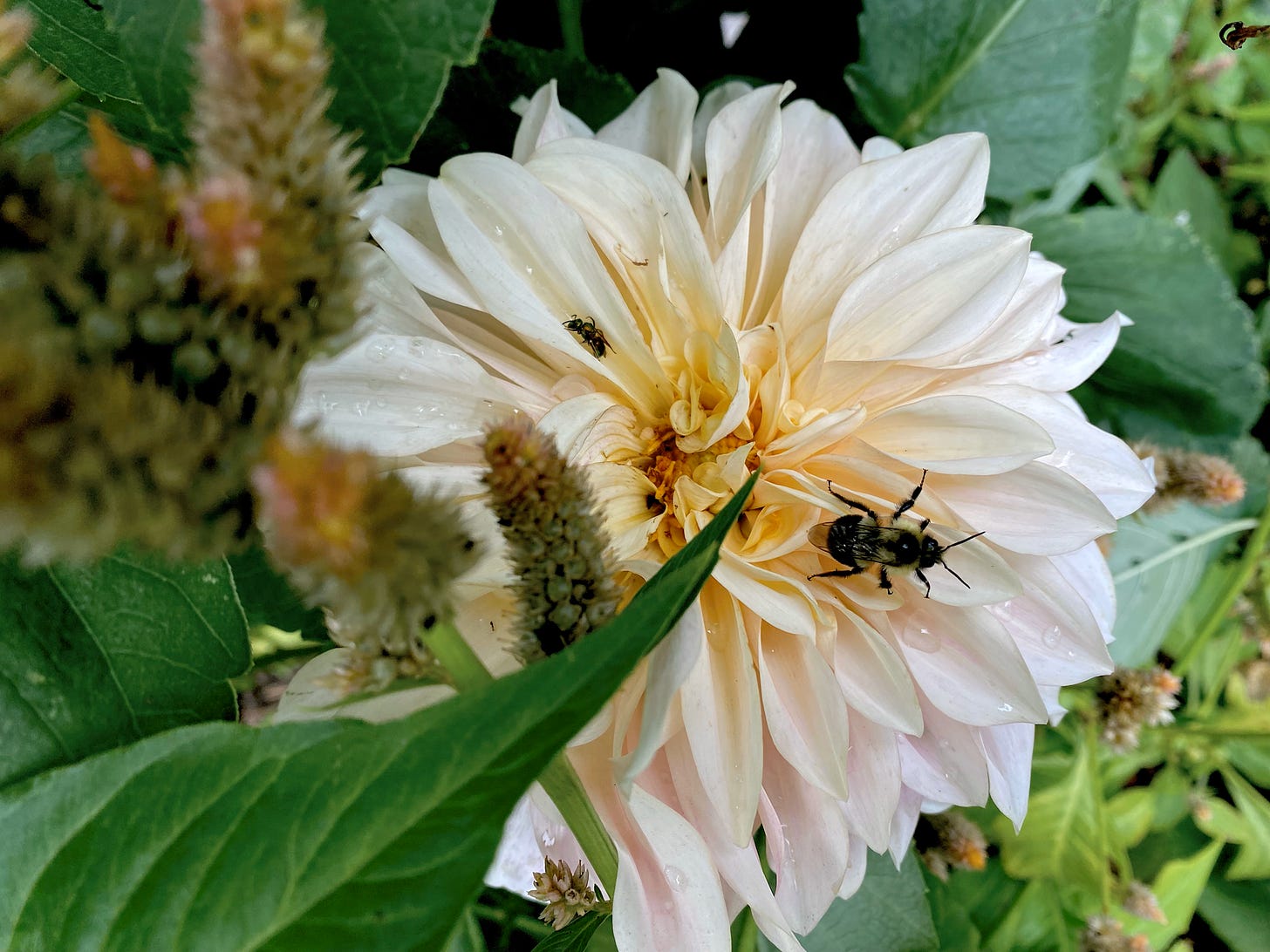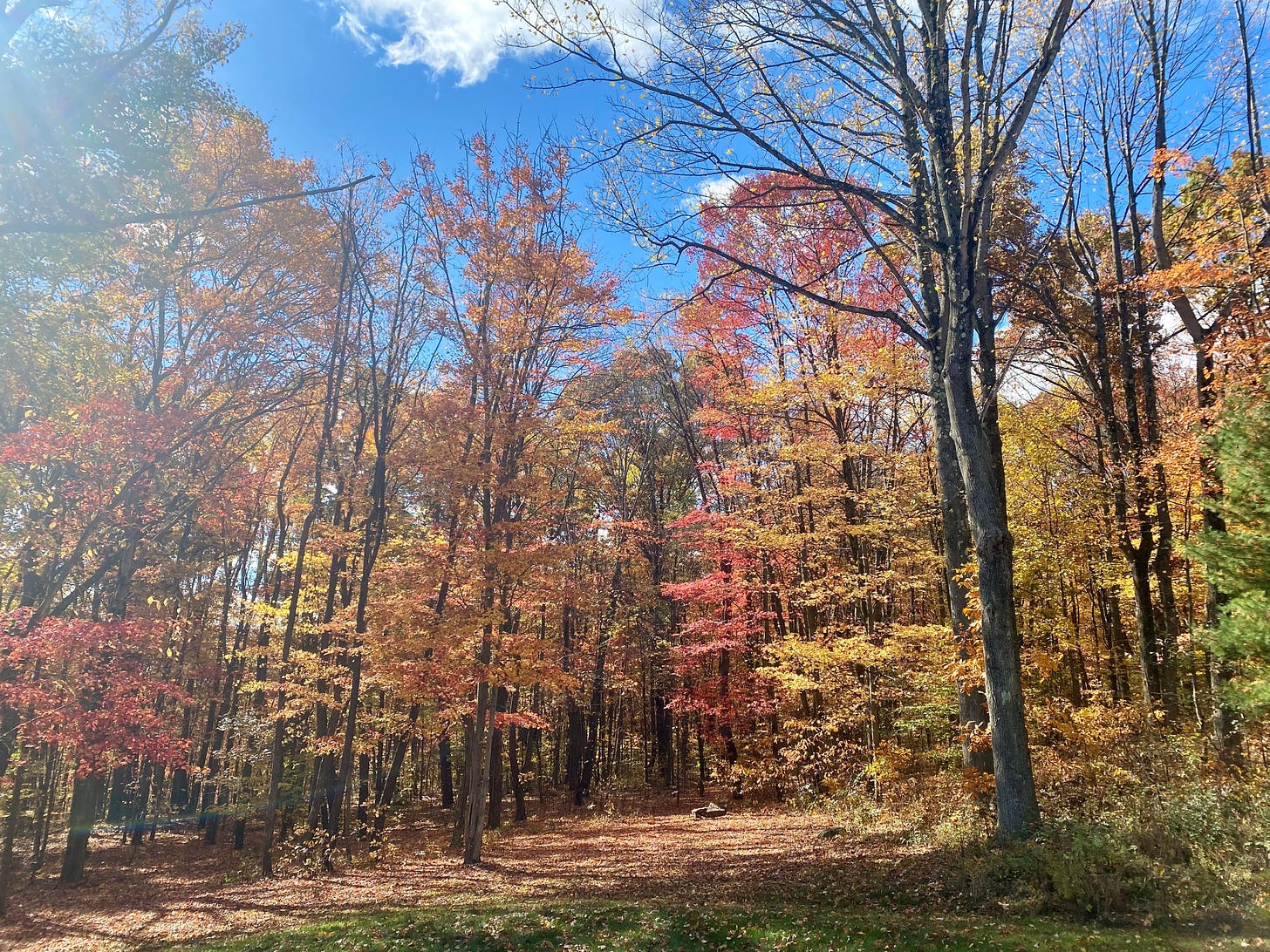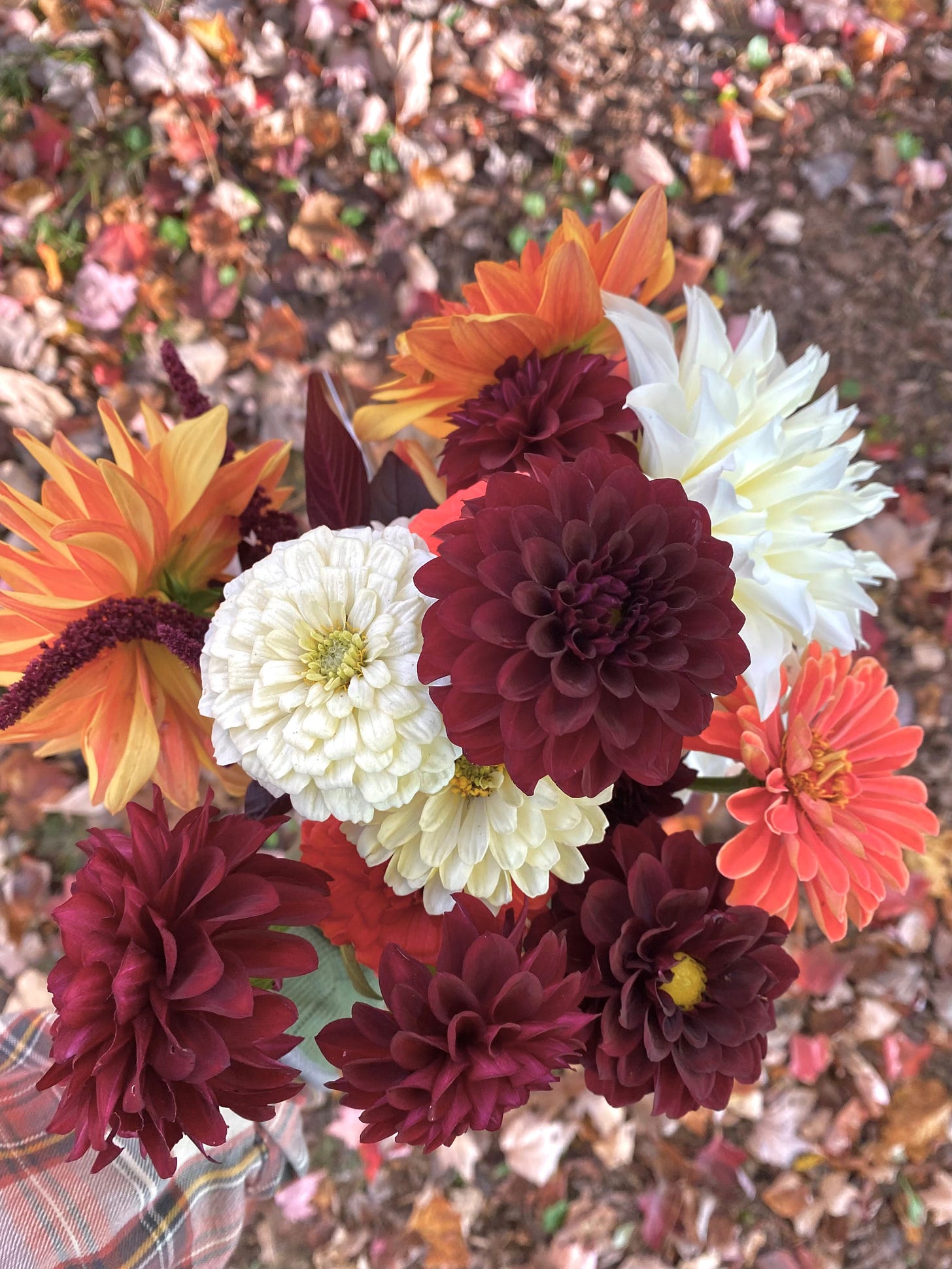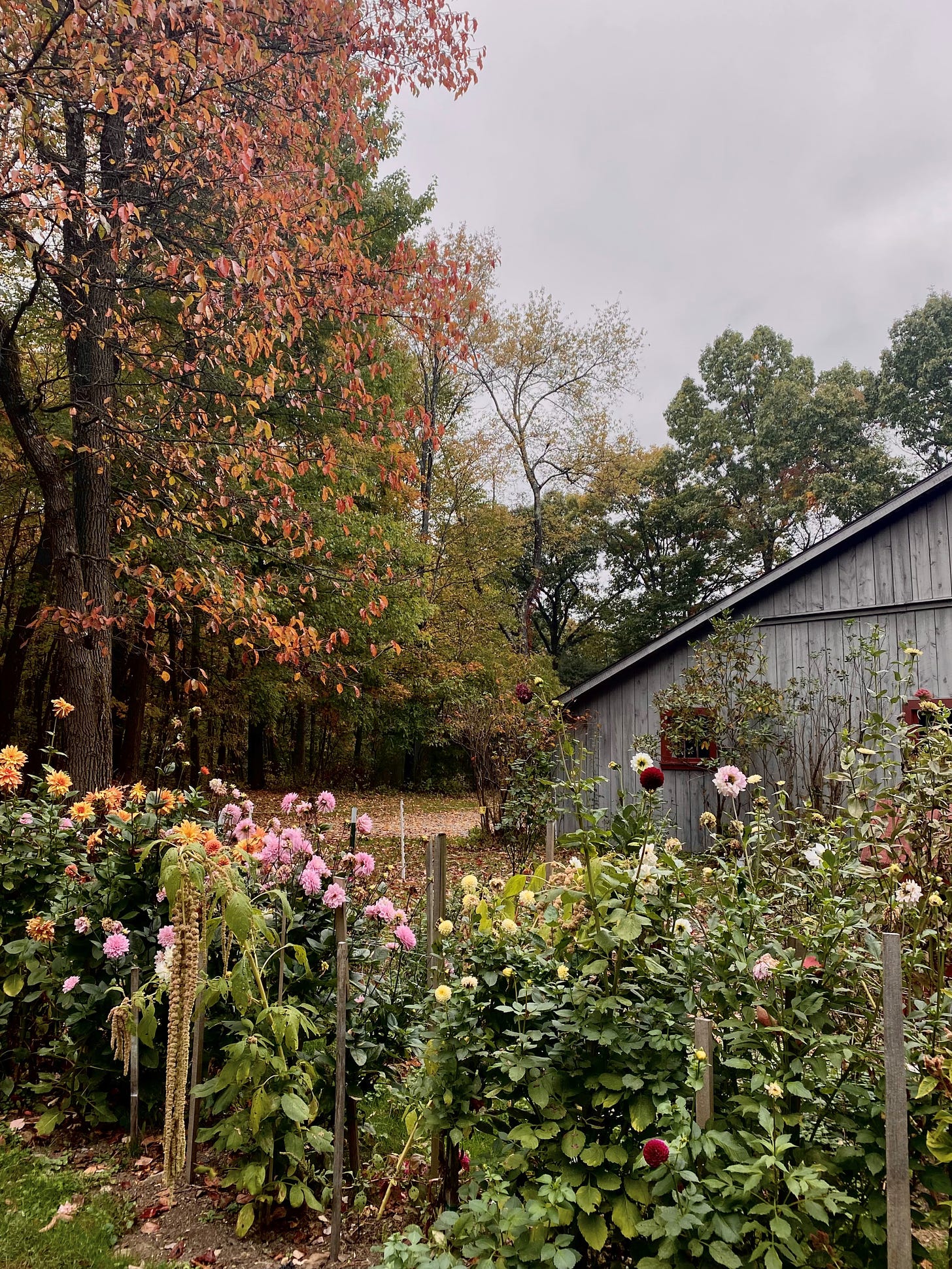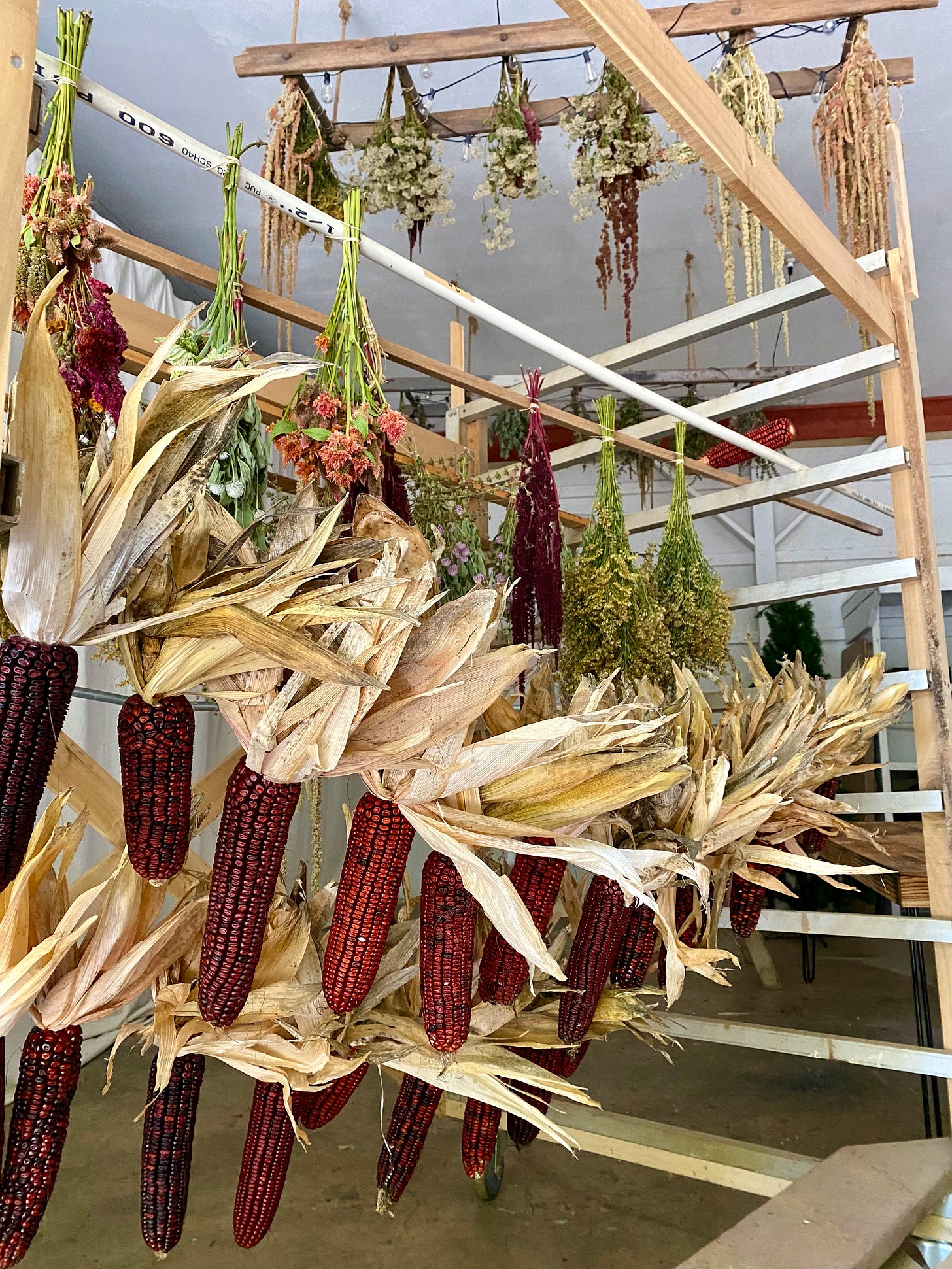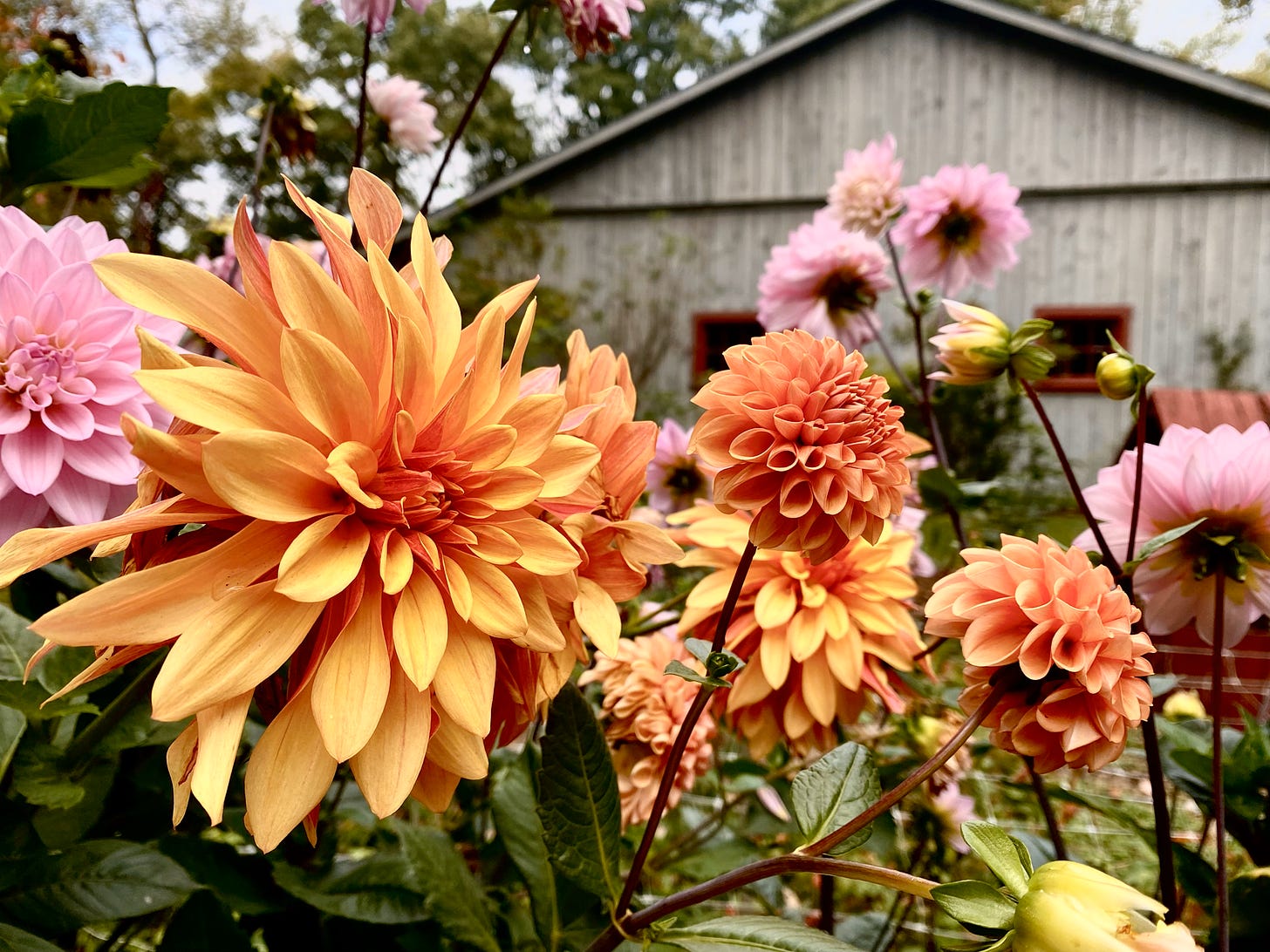“Because nature is not a place to visit. Nature is who we are.”
-Ada Limón, You Are Here: Poetry in the Natural World
Autumn | Week 5
October 25, 2024
A bumblebee has positioned itself in the center of a dahlia flower for hibernation and transition.
These winged ones are barely moving but seem to be intentionally feeling their way around the center of the wide open blooms. Nearly every other dahlia holds one as yellow pollen wraps the bee in some kind of magical autumn dust.
Many birds are on the move. A few weeks ago, there were very obvious, noisy flocks of blackbirds congregating at different places on the land for several days. They would move in unison… announcing, offering parting songs, alarming, serenading? It felt activating. What other creatures and plants have been responding to this call?
I didn’t think the leaves would be as vibrant this autumn since we had such a drought in late summer. However, they are — as always — magnificent. I notice my feelings of concern and confusion in the way the Earth is changing.
How can I support this Earth that holds me?
I collect seeds.
I put garden beds to rest with tree mulch.
I leave as many leaves as possible, just where they are on the ground. Did you know that many creatures find seasonal shelter under fallen leaves?
Fireflies and their larvae overwinter in and under the leaf layer. Pill bugs break down leaves and detoxify soil by removing heavy metals.
Some wild bees species, like those bumblebees on the dahlias, will settle under the leaves of the oak, maple, cherry, and poplar where I live. Specifically, next year's queen will shelter in boroughs on the surface of the soil, underneath the fallen leaves.
Caterpillars are a primary food source for the babes of the majority of the birds here. Butterflies are very reliant on the leaves from these great trees, and most overwinter in the leaves as either caterpillars or adults.
The eastern red bat overwinters under leaves, surviving subfreezing temperatures by hibernating in the safety of these autumn gifts and emerging in spring for an important role in the ecosystem.
The leaves I do gather are put into the compost pile, or the garden beds receive them directly as mulch. Can we find ways to both enjoy green grass spaces, and let the leaves fall, giving part of the yard back to nature?
I sit against an Oak tree and watch all the autumn colors watching me.
I feel more connected and seen, simply by pausing here with my tree sisters as they exhale their gifts. It feels like our cycles are intertwined in the most precious and mysterious ways.
I have many thank you’s… and teach me… and thank you.
A 7 minute audio recording below for you. Whether in your garden, with your back against a tree, lying on the ground, or simply holding a leaf in your hand… let’s sit and see.
Keep reading with a 7-day free trial
Subscribe to the natyrë journal to keep reading this post and get 7 days of free access to the full post archives.




